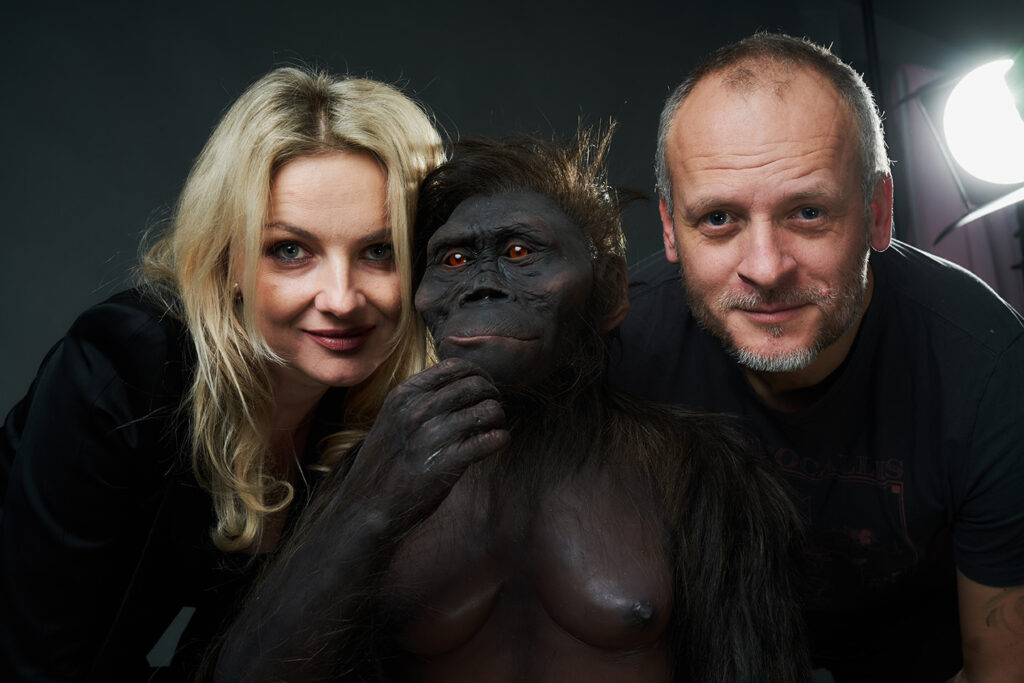Silicone casts models
A making process of silicone models is extremely time-consuming. The first stage consists of an in-depth understanding of the reconstructed specimen’s skeleton, which allows for a creation of a steel structure supporting the model in a desired position, typical for the covered specimen. Next, a prototype is made based on the internal steel frame. Coats of plasticine and modeling clay are layered to recreate with smallest details in the specimen’s external musculature and skin texture along with wrinkles and creases. The next step covers taking the silicone form off the sculpture, as it will serve in the creation of a mold. A casted model consists of many silicone layers that closely imitate skin, its irregular pigmentation, discolorations and imperfections. Later hair are implanted into a bare model’s outer layer. This tedious process requires pulling in hair, strand by strand, using a needle and a tiny crochet hook. Afterwards, only some minimal retouch, characterization is needed and the model begins to live. The sculptor, who spent hours of hard work on every wrinkle and mentioned reconstructions, is Ewa Stawiarska.










































